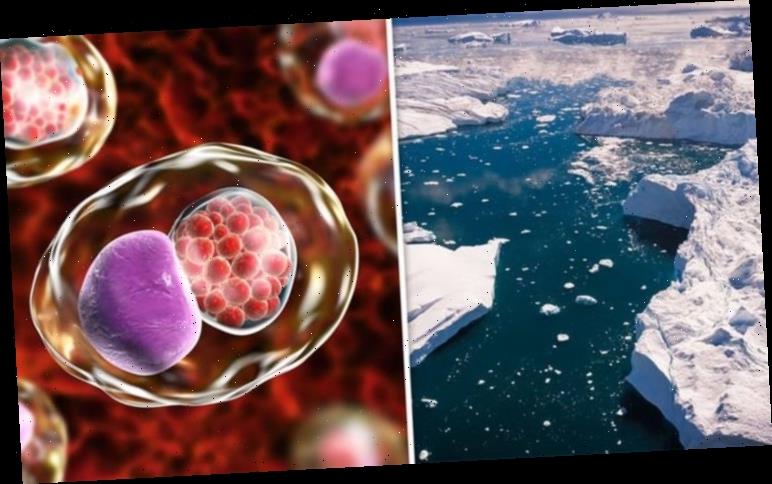A team of experts from Wageningen University, Netherlands, discovered chlamydia related bacteria three kilometres (1.9 miles) beneath he surface of the Arctic ice. Chlamydia and other related bacteria belong to a family known as Chlamydiae, which can interact with humans, animals, plants and fungi and even microscopic amoeba.
However, scientists do know that they can only usually survive by attaching themselves to other host organisms.
This is why researchers were discovered to find chlamydiae in the freezing deep, away from life which the bacteria can attach itself to.
The discovery could help scientists to understand how chlamydia became human and animal pathogens.
Experts from Wageningen University had been studying numerous species of microbes 3km deep into the Arctic Ocean as part of a study to understand how life can exist in extreme environments void of oxygen, known as extremophiles.
To their surprise, the researchers stumbled across highly abundant and diverse relatives of chlamydia
Jennah Dharamshi from Uppsala University in Sweden and lead author of the study said: “Finding Chlamydiae in this environment was completely unexpected, and of course begged the question what on earth were they doing there?”
The researchers discovered that one form of chlamydiae was closely related to the bacteria which causes infections among humans.
As a result, the team could unlock the keys as to how the microbial life became a sexually transmitted infection.
Ms Dharamshi said: “Finding that chlamydia have marine sediment relatives, has given us new insights into how chlamydial pathogens evolved.”
Wageningen researcher Daniel Tamarit added: “Chlamydiae have likely been missed in many prior surveys of microbial diversity.
“This group of bacteria could be playing a much larger role in marine ecology than we previously thought.”
Unfortunately, the researchers have been unable to recreate the bacteria in the lab – a common problem for studying extremophiles.
Thijs Ettema, professor in Microbiology at Wageningen University & Research in The Netherlands who led the work, said: “The vast majority of life on earth is microbial, and currently most of it can’t be grown in the lab.
DON’T MISS
Norway Chlamydia warning: ‘Land of CHLAMYDIA’ – see 7-Eleven ad here
Koala bear extinction:SEX DISEASE threatens Australian national symbol
STI symptom checker: Do I have chlamydia, syphilis or gonorrhoea?
“By using genomic methods, we obtained a more clear image on the diversity of life.
“Every time we explore a different environment, we discover groups of microbes that are new to science. This tells us just how much is still left to discover.
“Even if these Chlamydiae are not associated with a host organism, we expect that they require compounds from other microbes living in the marine sediments.
“Additionally, the environment they live in is extreme, without oxygen and under high pressure, this makes growing them a challenge.”
Source: Read Full Article




